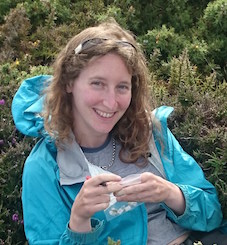Dr Talya Hackett
Research Project Co-ordinator
 |
|
Research interests
My research interest lies in community ecology, primarily using empirical field-based projects to examine broad questions about networks of interactions, particularly those that cross habitats or environments. This can apply to a range of taxa in a variety of locations. As such, I have investigated interactions between the community of bats and arthropods in the Arava Rift Valley, Israel linking the health of the habitat, namelyAcacia trees, to the activity and richness of the arthropods and insectivorous bats. I have also worked in the UK looking at the structure and function of multiple guilds of plant-insect interactions at the landscape level across a mosaic of habitats, asking how working at a landscape scale changes our understanding of a community and if multiple habitats in a given area are better for pollination and pest control. My current research is based in Ghana and focuses on determining the potential consequences of Anopheles gambiae, the malaria causing mosquito, being removed from an ecosystem. Consequently, we work in aquatic and terrestrial habitats, using molecular techniques to sample both diurnal and nocturnal food webs.
Selected publications
Hackett, T.D., Sauve, A.M.C., Davies, N., Montoya, D., Tylianakis, J.M. & Memmott, J. (2019). Reshaping our understanding of species’ roles in landscape-scale networks. Ecol. Lett. 10.1111/ele.13292
Hackett T.D., Holderied M.W., Korine C. 2017 Echolocation call description of 15 species of Middle-Eastern desert dwelling insectivorous bats. Bioacoustics 26(3): 217-235. (doi:10.1080/09524622.2016.1247386).
Hackett, T.D., Korine, C & Holderied, MW, 2014 A whispering bat that screams: Bimodal switch of foraging guild from gleaning to aerial hawking in the desert long-eared bat. Journal of Experimental Biology 217: 3028-3032. (doi:10.1242/jeb.100362).
Hackett T.D., Korine C., Holderied M.W. 2013 The importance of Acacia trees for insectivorous bats and arthropods in the Arava desert. PLoS ONE 8(2). (doi:10.1371/journal.pone.0052999).


 talya.hackett@biology.ox.ac.uk
talya.hackett@biology.ox.ac.uk